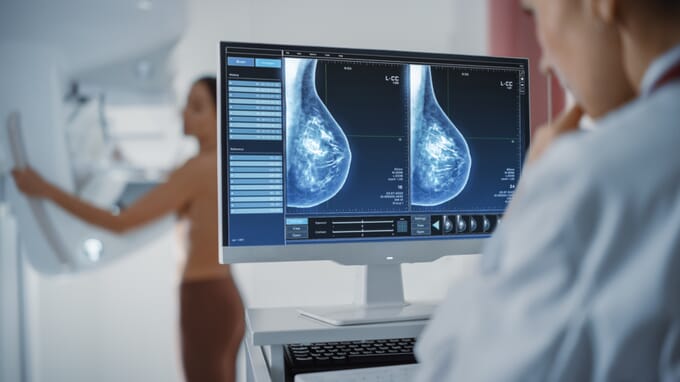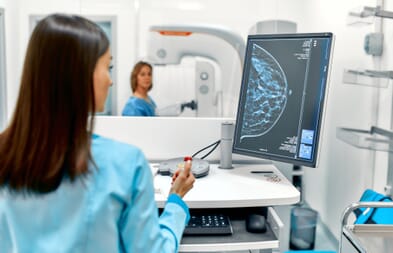
Mammograms are still the best tool to determine if a woman has breast cancer. A mammogram can show growths in the breast when they are too small for you or your doctor to feel them.
When breast cancer is found early, it may be easier to treat or cure. Some of the most relevant advances have been the advent of 3D mammography or breast tomosynthesis which was approved by the FDA in 2011.
 Just like a three-dimensional photo is more detailed and lifelike than a 2D image, digital breast tomosynthesis (DBT)—or 3D mammography—gives radiologists a clearer view of breast tissue.
Just like a three-dimensional photo is more detailed and lifelike than a 2D image, digital breast tomosynthesis (DBT)—or 3D mammography—gives radiologists a clearer view of breast tissue.
And that's why this new technology has rapidly become an essential imaging tool that enhances a doctor's ability to detect early breast cancer.
Thanks to 3D mammography, radiologists can view breast images in "slices," which essentially allows them to see straight through tissue layers and makes it less likely they’ll miss an early sign of cancer.
Unlike with 2D mammograms, the 3D technology also makes it easier for radiologists to detect breast cancer that is masked by overlapping fibroglandular tissue.
Studies show that combining 3D mammograms with standard mammograms reduces the need for additional imaging and slightly increases the number of cancers detected during screening. But more study is needed to understand whether 3D mammograms may reduce the risk of dying of breast cancer more than a standard mammogram alone.
Combining a 3D mammogram with a standard mammogram can:

Reduce the need for
follow-up imaging

Detect slightly more cancers than a standard mammogram alone

Improve breast cancer detection in dense breast tissue
Additional tests for breast cancer may include an ultrasound, an MRI or, sometimes, a biopsy to remove suspicious cells for testing in a lab by doctors who specialize in analyzing body tissue (pathology testing).

